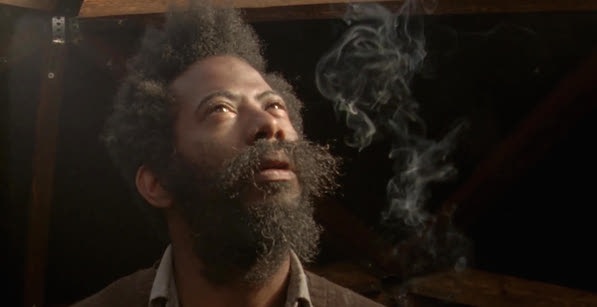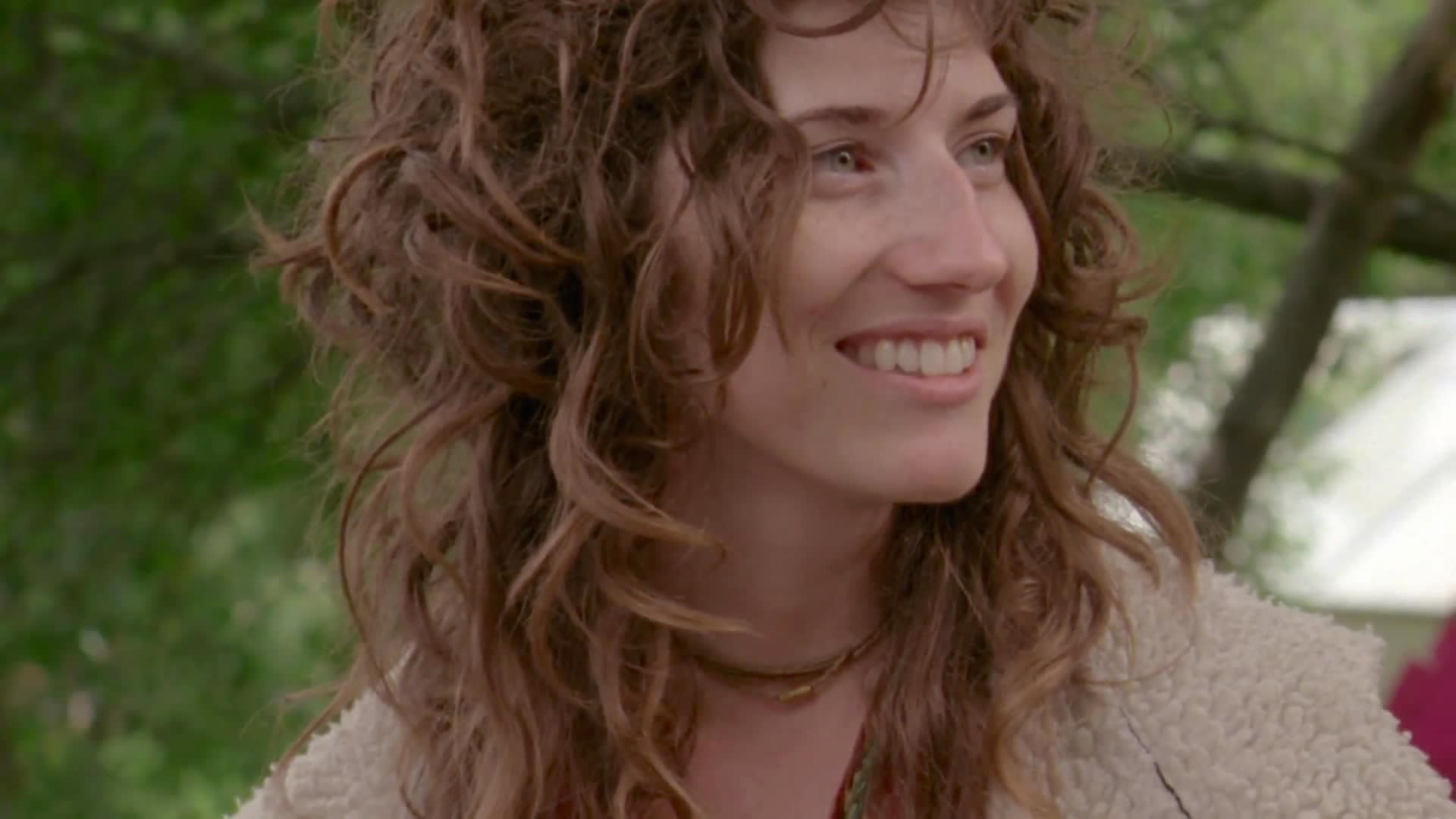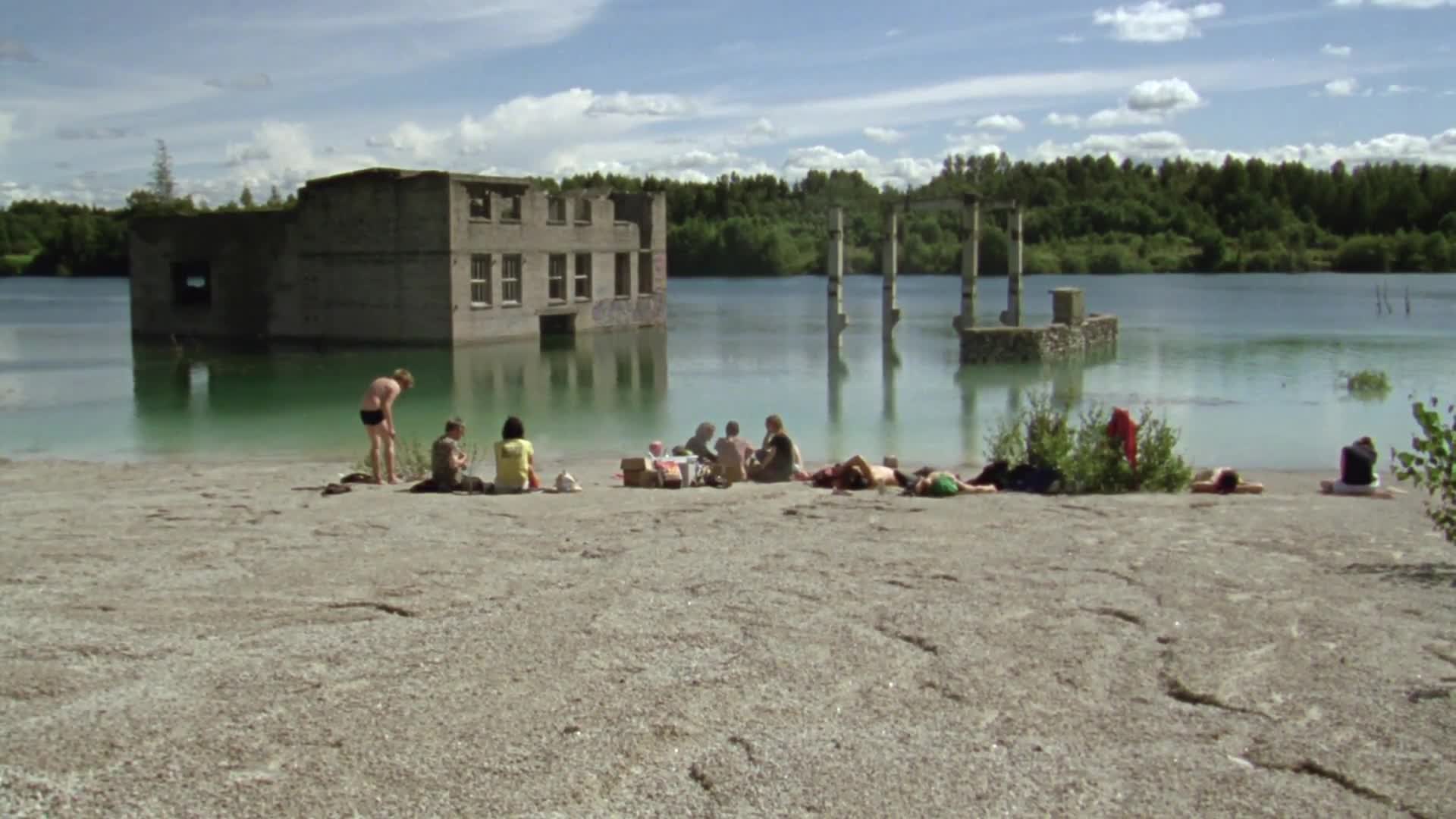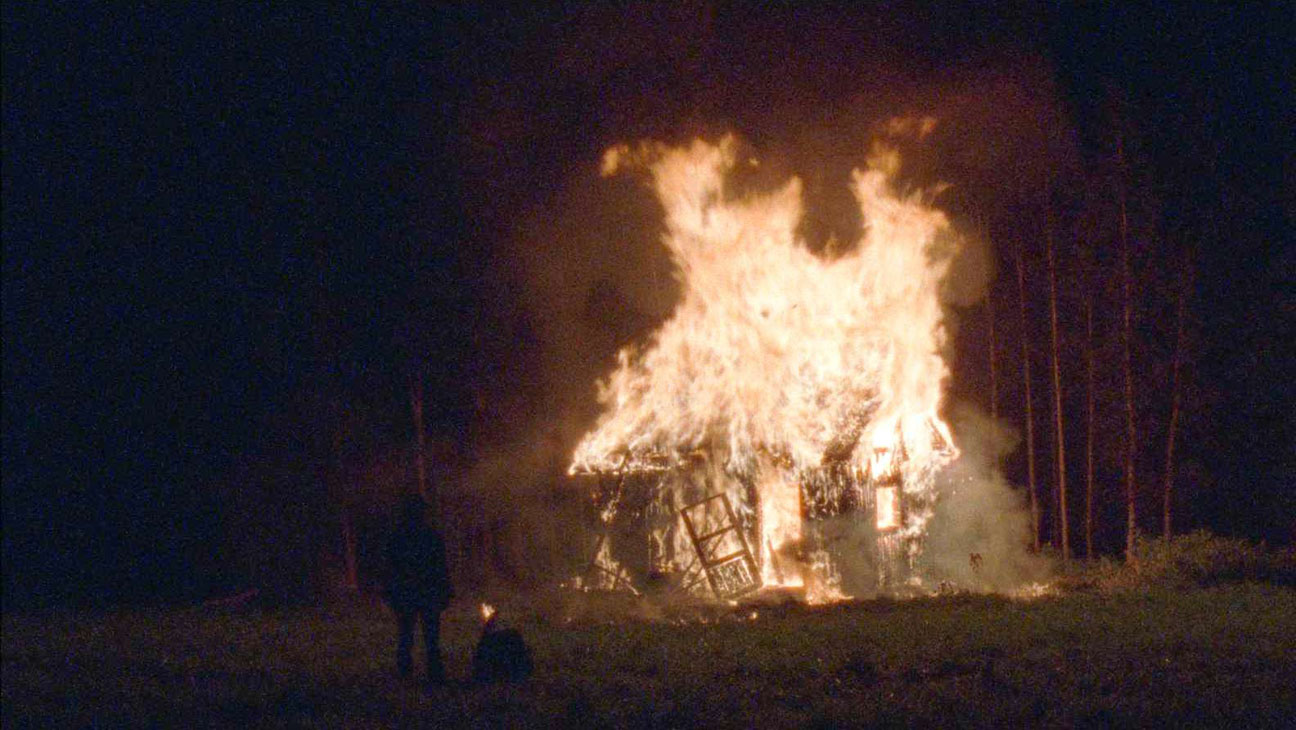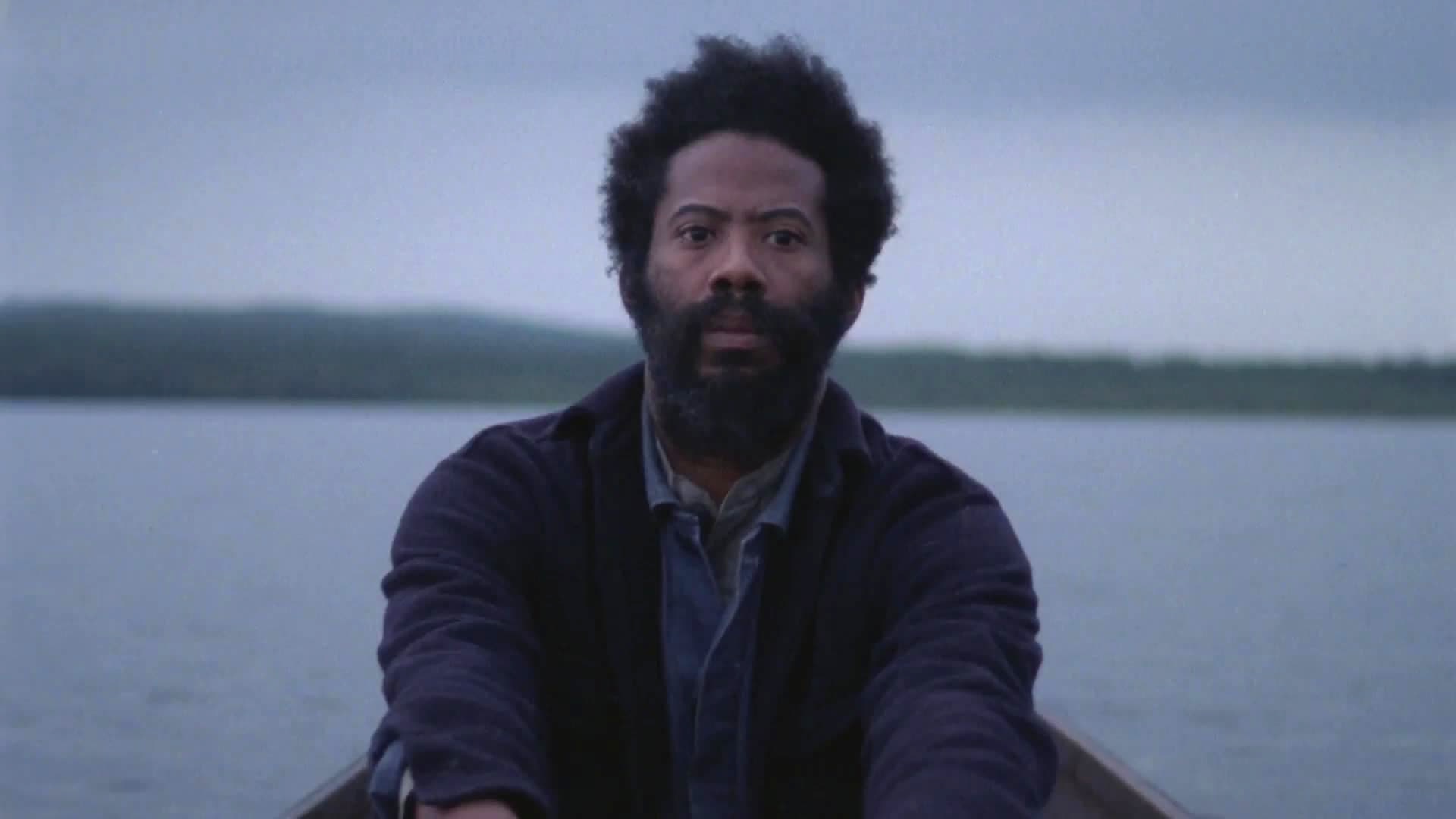[Editor’s note: Viewers in the New York area may see this film at Film Society of Lincoln Center beginning December 5; others can view it here on Fandor.]
There’s a scene early in Ben Rivers and Ben Russell’s A Spell to Ward Off the Darkness in which a young American woman, a member of a sort of hippie commune in Estonia, shares her vision for utopian architecture. She begins by describing a hypothetical building constructed as a spiral, one whose innermost circle, like the center of a vinyl record, would form “a locked groove that keeps going until infinity.” And what does the record do when it hits this ultimate, infinite groove? “Some record players start skipping,” she explains. “So it just keeps going, this locked groove of silence. Sometimes you’re doing something, you’re washing the dishes, and you don’t even realize that the record’s gotten to the center. And you look over and it’s still spinning—it’s going while we’re doing everything else.”
Now she’s locked into a groove of her own. She continues: “Say you’re dancing at a rave. There’s this pounding house beat—like toush toush toush. They call this trance music, because you enter into this trance. Your body is floundering around, and then whoom, you zone in, and then you’re like synced up. The whole room syncs up. It’s like you’re synced into this sound, this amorphousness, and it’s like the physical being linked to the metaphysical.” Rivers and Russell shoot this monologue in a kind of mirrored shot-reverse-shot that looks as if the woman were enjoying a conversation with herself; they’re linking the physical to the metaphysical, which, they seem to remind us, is a task for which the cinema remains uniquely equipped. Though it comes and goes without much ceremony, this scene proves significant: it’s the closest the film comes, as far as I can tell, to articulating anything like a thesis statement.
Whether by intention or happy accident, A Spell to Ward Off the Darkness itself follows the locked-groove trajectory described above: it begins by floundering around, meandering without apparent direction or structure, until whoom, everything seems to snap into place. We’re synced into the amorphousness. The only sense of organization apparent from the outset is a rough three-act outline, which is to say that, as the filmmakers have described it themselves, the film is structured as a triptych. In the first section, which runs a little under forty minutes, a silent, nameless protagonist (played by avant-garde musician Robert A.A. Lowe) is observed living among the members of an Estonian commune, where the camera drifts and meanders through a patchwork of activities and disconnected conversations. The second section follows the same man as he leaves the commune by canoe to camp alone on a wooded island, where he fishes, cooks, and, in a powerful but ambiguous moment, watches a small cabin as it burns spectacularly—a nod perhaps to the finale of Andrei Tarkovsky’s The Sacrifice.
The third and final section of the film finds our protagonist decked out in smeared white face paint and performing as the lead singer of a black-metal band in a Norwegian dive bar. Shot as a single, thirty-minute take, the sequence represents both a culmination of Lowe’s retreat into isolation and an exhilarating disavowal of it, and much of its effect is derived from the contrast between its intensity and the calm that preceded it. That the music itself is black metal strikes me as significant—this is the blistering, wall-of-sound stuff, abrasive to the point of overwhelming, but over the course of thirty minutes its effect becomes almost hypnotic. Trance, it seems, is not the only music capable of inducing the locked-groove sensation described earlier. Indeed, we can feel it begin to happen: “It’s like you’re synced into this sound, this amorphousness, and it’s like the physical being linked to the metaphysical.”
The idea of the locked groove is invoked early on as a symbol of utopian harmony—and yet, given the searching quality of the film itself, it’s difficult to shake the impression of locked grooves as a form of restraint. What are the members of this Estonian commune striving toward if not to forge a connection to the nebulous world around them? The appeal is obvious: order emerges from chaos to afford us a oneness with nature. The contradiction here is that, for Lowe’s taciturn hero, life among the commune’s freewheeling denizens seems to be an act of breaking away, of escaping the rigidity of ordered life for something more liberating. Hence, I think, why the film is broken into three discrete acts, each of which delineates a way of life defined by either isolation or socialization. The first concerns a group who have broken away from the world collectively. The second finds one man receding into the wilderness and, in turn, himself. The third announces a return to the world, but with a caveat: the return is a performance. Each lifestyle provides a locked groove of its own: the infinite closed loops of solitude, companionship or sociability. The question posed by the film is whether any is freer, or any more harmonious, than the other.

